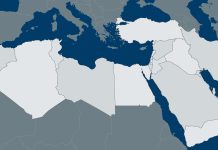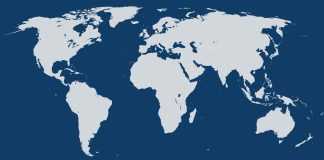Originally produced on Dec. 11, 2017 for Mauldin Economics, LLC

By Allison Fedirka
Six months ago, the Gulf Cooperation Council, helmed as always by its de facto leader Saudi Arabia, severed diplomatic ties with Qatar. This move was apparently meant to punish the country for its supposed support of terrorism. Riyadh announced the closure of its shared land border with Qatar. The remaining GCC members denied Qatar use of their airspace and ports. The measures were meant to bring the Qatari economy to its knees by isolating the government in Doha.
Why the Measures Failed
At first, these measures seemed as though they might succeed. They quickly sent a shock through the economy, particularly in banking and trade.
Since the Saudi announcement, an estimated $30 billion has been removed from Qatari banks, interest rates have risen, and deposits have declined. Foreign customers with deposits at Qatari banks have withdrawn and relocated their money. Deposits totaled 184.6 billion riyals ($50.7 billion) at the start of June; they have since declined to 137.7 billion riyals.
Trade initially suffered too. Large container ships are unable to dock in Qatar’s shallow waters, so shipping lines must use intermediary hubs in deeper seas known as feeder ports to take and deliver goods and services. Before the diplomatic row, the Emirati port of Jebel Ali served as Qatar’s feeder port. After the row, Qatar could no longer import or export from Jebel Ali—a particularly severe problem for a country that imports the vast majority of its consumable goods.
Ultimately, though, the plan to cripple Qatar failed. Large government funds and reserves enabled the government in Doha to support its economy while it absorbed the initial shock. In fact, the Qatari government spent approximately $38.5 billion to support the economy. The central bank’s reserves and liquidity totaled $45.8 billion in May and took a nose dive in June and July. They have since started to recover and now total $36.1 billion.
Also vital to the country’s economic survival has been its sovereign wealth fund, which is worth $300 billion (of which $180 billion is liquid). In mid-October, the government also announced that an additional $20 billion was being brought back into the country from the sovereign wealth fund’s foreign investments.
Qatar’s banking crisis got better. Eventually, the rate at which money was leaving Qatari banks slowed. Liabilities to foreign banks have also declined. Public sector deposits and central bank injections helped mitigate liquidity issues, and banks continue to prioritize securing additional long-term funding for operations.
Trade came back quickly. Qatar designated Oman’s Sohar port as its new feeder port and began to set up storage and logistics services there. Turkey and Iran also flew in food supplies. Over the past six months, Qatar has established direct shipping routes with ports in India, Iran, Turkey, Oman, Kuwait, Pakistan, Malaysia, and Taiwan. Routes to North African countries like Tunisia and Morocco are expected soon.
(Notably, the country was able to maintain its liquefied natural gas exports because the Strait of Hormuz and Suez Canal have remained open to tankers. This is significant because Qatar is the world’s largest exporter of LNG, an important source of revenue for the government.)
Cause for Optimism
Though the action taken against Qatar may not have achieved what its authors had hoped it would, financial institutions such as the International Monetary Fund have warned that the dispute could undermine investor confidence in the GCC if it continues. Qatar’s economy was slowing even before Saudi Arabia severed diplomatic ties, thanks in part to low energy prices. But non-oil sectors of Qatar’s economy—such as construction, manufacturing, agriculture, and services—are projected to grow by nearly 5% in 2017. The expectation of higher oil prices in 2018 has only added to Doha’s optimism.
Recent agreements made last week suggest that some countries maintain their business confidence in Qatar. The country’s economy minister secured $5.8 billion of British investments while on an official trip to London. He came to another deal whereby Qatar would buy $6.7 billion worth of Typhoon combat jets from the United Kingdom. The countries also plan to use the recently established Joint Economic and Trade Commission to improve cooperation in the banking services sector as well as coordination between central banks. British businesses are expected to be involved in more infrastructure development and to participate in public-private partnership.
Elsewhere, Qatari Emir Tamim bin Hamad Al Thani and French President Emmanuel Macron signed $12 billion dollars’ worth of trade and business deals. The agreements included the Qatari purchase of 12 Dassault Rafale fighter jets, 50 Airbus A321s, and 490 VBCI armored vehicles. (Qatar also purchased US military jets and Italian naval ships in the wake of June 5.) France’s national rail authority will help Doha run and maintain both its light rail system and future metro.
Qatar was able to withstand Saudi Arabia’s tactics. It had enough money to keep the economy afloat. It also appears to have successfully reoriented itself to accommodate the new reality, as evidenced by its overtures with Turkey and Iran, which have gained market share for foods and construction inside Qatar. Al Thani’s recent comments on the state of Qatar, then, come as no surprise: “Qatar’s sovereignty is above all considerations. We want to resolve the rift but not at the expense of our sovereignty and dignity.” Doha has not compromised on its position because it has not had to.







